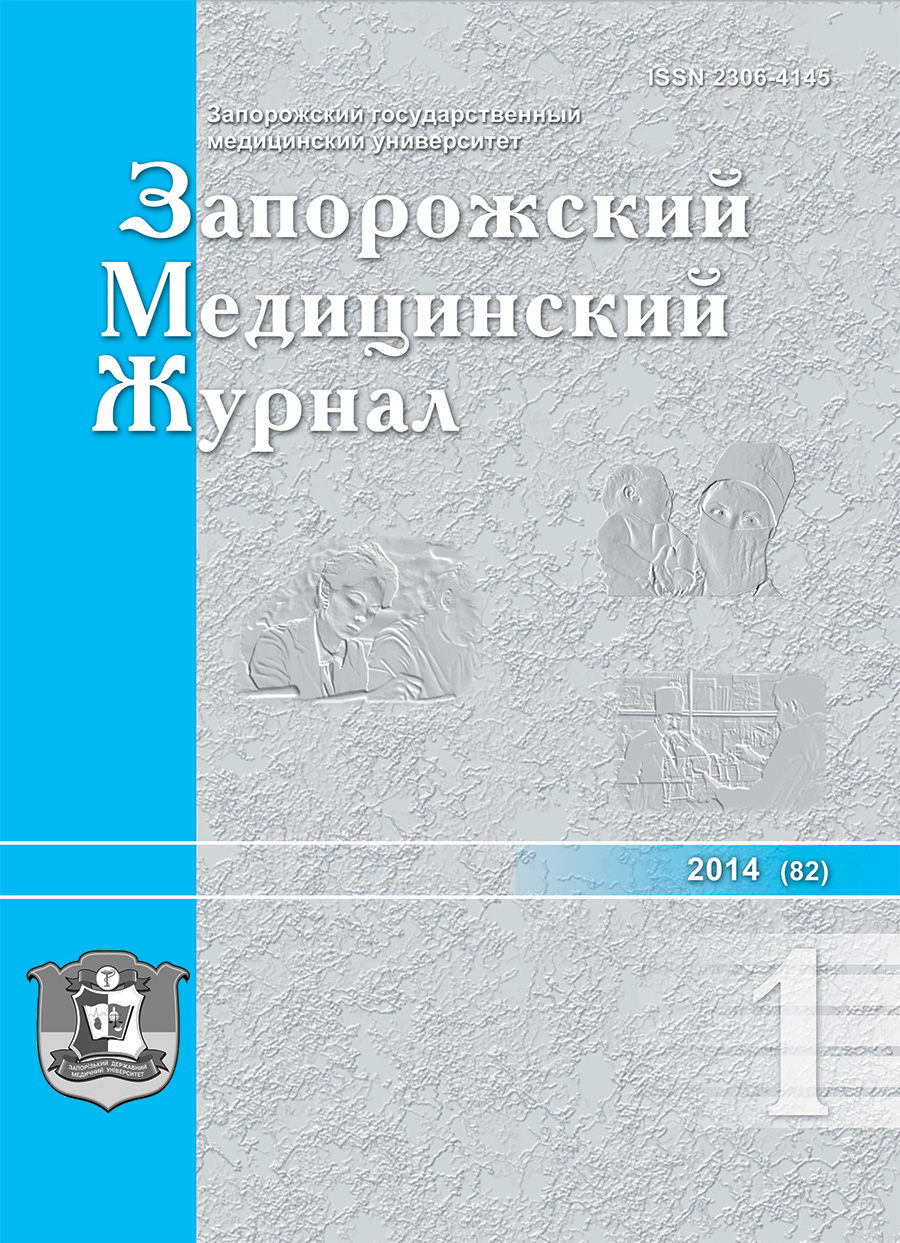Women adaptation to maternity after physiological delivery and psychological readiness to the early discharge from obstetric department
DOI:
https://doi.org/10.14739/2310-1210.2014.1.23667Keywords:
maternity, puerperal period, psychological readiness, rigidity, anxietyAbstract
Introduction. Nowadays problem of maternity acquires relevance, being one of the most difficult and little worked out area of science. One of the major stages of a puerperal period in development of maternity is the acquaintance with a child, his psychological acceptance as independent person, adaptation to him, and the essence of maternity changes on the whole. Thus researches studying the psychological aspects of puerperium, are small and fragmentary.
Thereby, the aim of work was to estimate women adaptation to maternity after physiological partum and psychological readiness to the early maternity hospital discharge.
Materials and research methods. There was made a psychodiagnostic examination of 110 puerperanten with the different parity of partum on the second day of postpartum. Group A - primiparas – 64 women, group B – secundiparas - 46 patients. A criterion of including in clinical groups was a physiological during of partum and postpartum.
Results of researches and their discussion. The moderate personality anxiety was characteristic for majority primiparas (68,7 %) and secundiparas (63,0 %). Middle level of rigidity for delieryin group A (8,5±3,3 points) was lower than in the group B (9,3±3,2 points) (р>0,05). Almost the third part (28,3 %) of secundiparas and 42,2 % primiparas of women have the subzero index of rigidity (р<0,05). Moderate rigidity occured in 37 (57,8 %) puerperanten of group A and 32 (69,5 %) – group B. The high level of rigidity was found only in secundiparas patients (2,2 %). High rigidity does not allow to react flexibly on the changing necessities of child, that can make problems in co-operating with a baby, wrong evaluation of the possibilities of mother and child. The comparative estimation of levels of frustration and aggressiveness marked absence of reliable differences. Reactive anxiety had a greater mean value (40,2±7,4 points) in a group B, exceeding this index in a group A on 1,4 point (38,8±10,6 points). High situation anxiety in 2,0 time more often diagnosed for patients after the repeated partus (28,3 % against 14,1 % for primiparas). A moderate anxiety occurred in 48 (75,0 %) primiparas and 29 (63,0 %) secundiparas.
Conclusions.
1. Adaptation to maternity in a puerperal period and psychological readiness to the hospital discharge is characterized by the levels of rigidity and situation anxiety.
2. Most puerperanten on the second day of puerperal period have the formed psychological readiness to maternity and hospital discharge with new-born.
3. Psychological disadaptation with greater frequency is diagnosed in women after the repeated partum.
4. The psychodiagnosis examination of puerperanten is recommended for the estimation of adaptation to maternity as one of objective tests of readiness to the maternity hospital discharge.
References
Васина А.Н. Психологические особенности телесного опыта женщин с маститами в послеродовом периоде [Электронный ресурс] / А.Н. Васина, В.В. Николаева // Психологические исследования. – 2011. – № 5. – Режим доступа: http://psystudy.ru.
Васина А.Н. Психологические факторы возникновения послеродовых осложнений (на примере маститов): дис. … к. психол. н. / А.Н. Васина. – М., 2011. – 393 с.
Крумпане А.Я. Выявление беременных с повышенным риском психической дизадаптации / А.Я. Крумпане // Мат. IV Международного Конгресса «Молодое поколение XXI века: Актуальные проблемы социально-психологического здоровья» (г. Киров, 22–24 сентября, 2009 г.). – М.: ЗЕТ-СТИЛ, 2009. – С. 69–70.
Овчарова Р.В. Психология родительства: учеб. пособ. для студ. высших учеб. завед. / Р.В. Овчарова. – М.: Академия, 2005. – 368 с.
Перун М. Стадії розвитку материнства: психосоціальний аспект / М. Перун // Вісник Львівського університету. – 2009. – Вип. 12. – С. 225–234.
Проскурняк О. Чинники та етапи становлення материнства / О. Проскурняк // Практична психологія та соціальна робота. – 2007. – № 3. – С. 13−16.
Розов В.І. Методи оцінки та самооцінки стресових станів / В.І. Розов // Практична психологія та соціальна робота. 2007. № 5. С. 4152.
Станько Э.П. Беременность, роды и послеродовой период: физиология, психопатология, психотерапия и психопрофилактическая подготовка / Э.П. Станько, В.А. Лискович, И.А. Наумов, С.А. Гарбуз – Гродно: Гродненский государственный медицинский университет, 2005. – 194 с.
Устинова Н.А. Внутриличностные детерминанты самосознания матери: автореф. дис. … к. психол. н. / Н.А. Устинова. – Екатеринбург, 2009. – 23 с.
Филиппова Г.Г. Психологические аспекты материнства [Электронный ресурс] / Г.Г. Филиппова. – Режим доступа: http://way-s.ru/ezoterika/48/7.html.
Филиппова Г.Г. Психология материнства: учебное пособие / Г.Г. Филиппова. – М.: Изд-во Института Психотерапии, 2002. – 240 с.
Хрестоматия по перинатальной психологии: психология беременности, родов и послеродового периода / [сост. А.Н. Васина]. – М.: УРАО, 2005. – 328 с.
Шапарь В. Новейший психологический словарь / В. Шапарь. – М.: Феникс, 2007. – 816 с.
Шапошникова Т.Е. Психологические аспекты готовности к материнству / Т.Е. Шапошникова // Психотерапия. – 2004. – № 6. – С. 9–19.
Downloads
How to Cite
Issue
Section
License
Authors who publish with this journal agree to the following terms:
Authors retain copyright and grant the journal right of first publication with the work simultaneously licensed under a Creative Commons Attribution License that allows others to share the work with an acknowledgement of the work's authorship and initial publication in this journal. 

